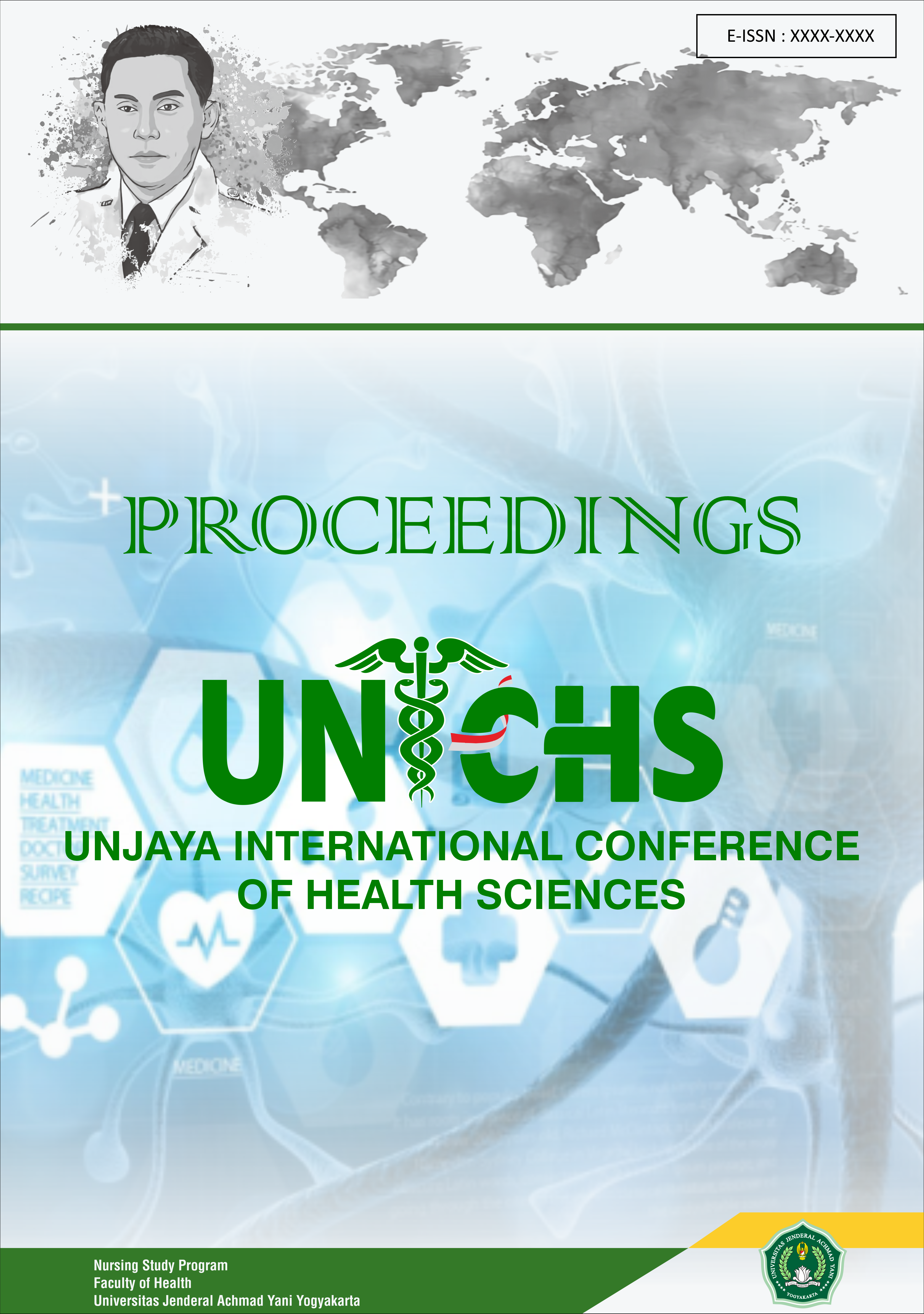Supporting Factors for Recovery of Tuberculosis Suffers in Kalumpang Health Center Working Area, Ternate City
Keywords:
Supporting factors, Recovery, TB sufferers, TernateAbstract
Background: Tuberculosis is an infectious disease that is the main cause of disease and one of the leading causes of death worldwide and an infectious disease caused by Mycobacterium tuberculosis germs so that it can cause airway disorders. The aim of the study was to analyze supporting factors for recovery of Tb sufferers.
Methods: This type of study is observational analytic research with case control approach. The number of samples were 148 participants for case group of 74 people and control group of 74 people. So total sample was 148 people with ratio of 1:1. Analysis of relationship by considering the Odds Ratio (OR) and Confidence Interval (CI).
Results: There was statistically insignificant relationship between adherence to taking medication and recovery of Tb sufferers with OR 0.669 (95% CI: 0.240-1.863). There was statistically significant relationship between availability of PMO and recovery of Tb sufferers with OR 0.476 (95% CI: 0.243-0.931). There was statistically significant relationship between availability of PMO and recovery of Tb sufferers with OR 0.451 (95% CI: 0.231-0.882). There is simultaneous significant relationship between compliance level, availability of PMO, and family support on recovery of Tb sufferers with 95% CI: 0.000.
Conclusion: Recovery rate of Tb is not only treatment for Tb sufferers, but supporting factors for recovery of Tb sufferers are very important and necessary so that there is need for continuous and sustainable health promotion to all groups in community.
References
Apriliyasari, R.W., Wulandari, F. & Purnanto, N.T. 2014. Hubungan Antara Kepatuhan Minum Obat Dengan Tingkat Kesembuhan Pengobatan Pasien Tuberculosis Paru DI BKPM Wilayah Pati. Jurnal keperawatan dan Kesehatan Masyarakat, 1(3), pp.2–6. https://doi.org/10.31596/jcu.v1i3.52.
Boy, E. 2015. Efektifitas Pelatihan Kader Tb. Jurnal Pendidikan Kedokteran Indonesia, 4(2), pp.83–89. https://doi.org/10.22146/jpki.25274.
Chaves Torres, N.M., Chaves Torres, N.M., Quijano Rodríguez, J.J., Porras Andrade, P.S., Arriaga, M.B., Netto, E.M. 2019. Factors predictive of the success of tuberculosis treatment: A systematic review with meta-analysis. PloS one, 14(12), p.e0226507. https://doi.org/110.1371/journal.pone.0226507.
Iribarren, S., Beck, S., Pearce, P.F., Chirico, C., Etchevarria, M., Cardinale, D., Rubinstein, F. 2013. TextTB: A Mixed Method Pilot Study Evaluating Acceptance, Feasibility, and Exploring Initial Efficacy of a Text Messaging Intervention to Support TB Treatment Adherence. Tuberculosis research and treatment, 2013, p.349394. https://doi.org/10.1155/2013/349394.
Ivers, L.C. & Cullen, K.A. 2011. Food insecurity: special considerations for women. The American journal of clinical nutrition, 94(6), p.1740S–1744S. https://doi.org/10.3945/ajcn.111.012617.
Kassim, S.A., Cote, A., Kassim, S.M., Abbas, M., Baig, M.M.F.A., Ahmed, A.M., Hussein, M.M. et al. 2021. Factors influencing treatment outcomes of tuberculosis patients attending health facilities in Galkayo Puntland, Somalia. Journal of Public Health, 43(4), pp.887–895. https://doi.org/10.1093/pubmed/fdaa146.
Kemenkes RI. 2020. Pedoman Nasional Pelayanan Kedokteran Tata Laksana Tuberkulosis, Jakarta: Kementrian Kesehatan RI.Yayasan KNCV Indonesia, 2022. Laporan Kasus Tuberkulosis (TBC) Global Dan Indonesia 2022. Yayasan KNCV Indonesia – Untuk Indonesia Bebas TBC. Available at: https://yki4tbc.org/laporan-kasus-tbc-global-dan-indonesia-2022/.
Kementrian Kesehatan RI. 2023. Laporan Program Penanggulangan Tuberkulosis Tahun 2022, Jakarta. Available at: https://tbindonesia.or.id/pustaka_tbc/laporan-tahunan-program-tbc-2021/.
Khairunnisa, T. 2019. Faktor-faktor yang mempengaruhi kesembuhan pasien tuberkulosis paru di wilayah kerja Puskesmas Kabupaten Langkat Tahun 2018. Jurnal Kesehatan Masyarakat dan Lingkungan Hidup, 4(1), pp.9–17. Available at: http://e-journal.sari-mutiara.ac.id/index.php/Kesehatan_Masyarakat.
Liu, X., Lewis, J.J., Zhang, H., Lu, W., Zhang, S., Zheng, G., Bai, L. et al. 2015. Effectiveness of Electronic Reminders to Improve Medication Adherence in Tuberculosis Patients: A Cluster-Randomised Trial. PLoS medicine, 12(9), p.e1001876. https://doi.org/10.1371/journal.pmed.1001876
Ministry of Health Republic of Indonesia. 2023. Tuberculosis Control in Indonesia 2022: Direction General of Prevention and Disease Control, Jakarta: Ministry of Health Republic of Indonesia.
Munro, S.A., Lewin, S.A., Smith, H.J., Engel, M.E., Fretheim, A., Volmink, J. 2007. Patient adherence to tuberculosis treatment: a systematic review of qualitative research. PLoS medicine, 4(7), p.e238. https://doi.org/10.1371/journal.pmed.0040238
Naidoo, P., Theron, G., Rangaka, M.X., Chihota, V.N., Vaughan, L., Brey, Z.O., Pillay, Y. 2017. The South African Tuberculosis Care Cascade: Estimated Losses and Methodological Challenges. The Journal of infectious diseases, 216(suppl_7), pp.S702–S713. https://doi.org/10.1093/infdis/jix335
Probandari, A.N. 2010. Revisiting the Choice to involve hospitals in the partnership for tuberculosis control in Indonesia. Sweden: Department of Public Health and Clinical Medicine Epidemiology and Global Health Umeå University. Available at: https://www.researchgate.net/publication/268385861_Revisiting_the_Choice_To_involve_hospitals_in_the_partnership_for_tuberculosis_control_in_Indonesia
Ranganathan, P. & Aggarwal, R. 2019. Study designs: Part 3 - Analytical observational studies. Perspectives in clinical research, 10(2), pp.91–94. https://doi.org/10.4103/picr.PICR_35_19.
Santika Putri, G.F. & Hisyam, B. 2014. Hubungan Tingkat Kesembuhan Tuberkulosis Paru Dewasa Dengan Pengobatan Metode Dots Dan Non Dots Di Rumah Sakit Haji Abdoel Madjid Batoe Kabupaten Batanghari Provinsi Jambi Tahun 2011. Jurnal kedokteran dan kesehatan Indonesia, 6(2), pp.85–94. https://doi.org/10.20885/jkki.vol6.iss2.art5.
Selasa, P., Teli, M., Merlin, N.M., Wawomeo, A., Acob, J. 2022. Tuberculosis Drugs Supervisior Roles Improved the TB Recovery at The Community Health Center in Kupang City. Window of Health : Jurnal Kesehatan, 5(3), pp.697–705. https://doi.org/10.33096/woh.vi.90.
Stang, Marwang, S., Rachmat, M., Balumbi, M., Ohorella, F. 2023. Successful treatment of tuberculosis using a collaborative approach between family and health workers. Journal of public health in Africa, 14(11), p.2455. https://doi.org/10.4081/jphia.2023.2455.
Syafakamila, M. & Purbowati, R., 2022. Relationship Between Medication Adherence Level and Recovery of Pulmonary Tuberculosis Patients at Gapura Public Health Center Sumenep. Jurnal Ilmiah Kedokteran Wijaya Kusuma, 11(2), pp.131–137. Available at: https://journal.uwks.ac.id/index.php/jikw/article/view/2035/pdf.
Theron, G., Peter, J., Zijenah, L., Chanda, D., Mangu, C., Clowes, P., Rachow, A. et al., 2015. Psychological distress and its relationship with non-adherence to TB treatment: a multicentre study. BMC infectious diseases, 15, p.253. https://doi.org/10.1186/s12879-015-0964-2.
Van, L.H., Phu, P.T., Vinh, D.N., Son, V.T., Hanh, N.T., Nhat, L.T.H., Lan, N.H. et al., 2020. Risk factors for poor treatment outcomes of 2266 multidrug-resistant tuberculosis cases in Ho Chi Minh City: a retrospective study. BMC infectious diseases, 20(1), p.164. https://doi.org/10.1186/s12879-020-4887-1.
WHO. 2010. Treatment of Tuberculosis: Guidelines. 6th Chapter, Supervision and patient support 4th ed.,
Geneva: World Health Organization. Available at: https://www.ncbi.nlm.nih.gov/books/NBK138737/.
WHO. 2015. WHO End TB Strategy. World Health Organization. Available at: who.int/tb/post2015_strategy/en/. WHO. 2021. Global Tuberculosis Report, Available at: https://apps.who.int/iris/handle/10665/346387.
WHO. 2019. Treatment coverage Data by WHO region. Global Health Observatory data repository. Available at: https://apps.who.int/gho/data/view.main.57056ALL.
WHO. 2022a. Fakta-fakta Utama Tuberkulosis. World Health Organization. Available at: https://www.who.int/indonesia/news/campaign/tb-day-2022/fact-sheets.
Worku, S., Derbie, A., Mekonnen, D., Biadglegne, F. 2018. Treatment outcomes of tuberculosis patients under directly observed treatment short-course at Debre Tabor General Hospital, northwest Ethiopia: nine-years retrospective study. Infectious diseases of poverty, 7(1), p.16. https://doi.org/10.1186/s40249-018-0395-6.
Xu, W., Lu, W., Zhou, Y., Zhu, L., Shen, H., Wang, J. 2009. Adherence to anti-tuberculosis treatment among pulmonary tuberculosis patients: a qualitative and quantitative study. BMC health services research, 9, p.169. https://doi.org/10.1186/1472-6963-9-169.
Xu, M., Markström, U., Lyu, J., Xu, L. 2017. Detection of Low Adherence in Rural Tuberculosis Patients in China: Application of Morisky Medication Adherence Scale. International journal of environmental research and public health, 14(3). https://doi.org/10.3390/ijerph14030248.
Yani, D.I., Juniarti, N. & Lukman, M. 2022. Factors Related to Complying with Anti-TB Medications Among Drug-Resistant Tuberculosis Patients in Indonesia. Patient Preference and Adherence, 16(December), pp.3319–3327. https://doi.org/10.2147/PPA.S388989.






